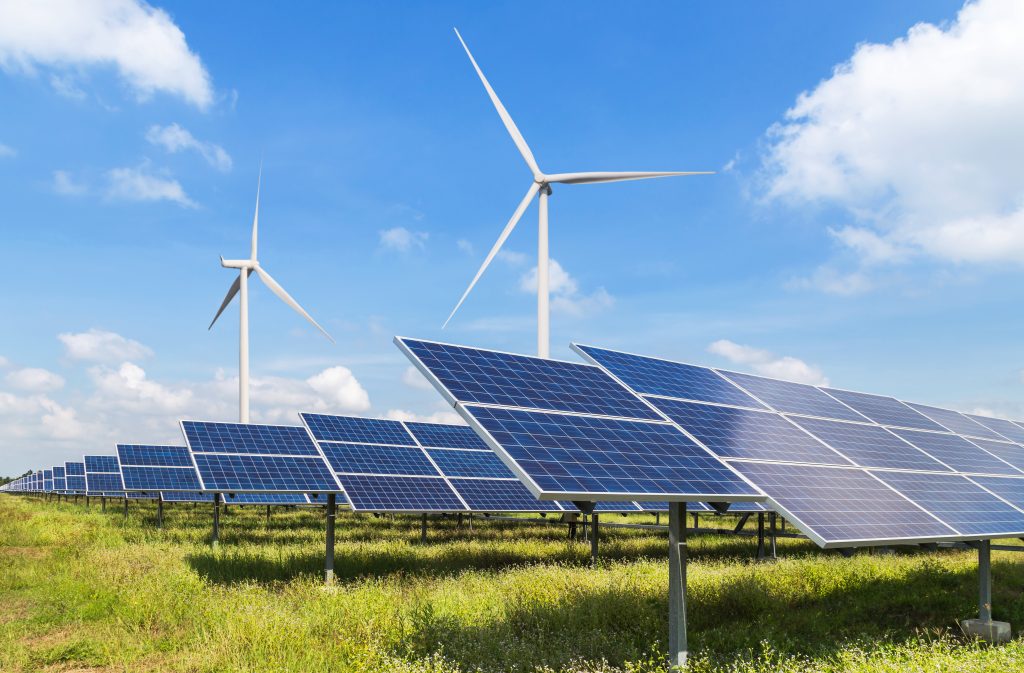
Let’s Talk… About Cap-and-Trade
Lawmakers Should Let the Cornerstone Climate Program Be the Market Solution it is Meant to Be
August 28, 2025
A fundamental shift will need to occur in California’s economy as the state navigates a path to carbon neutrality by 2045. The Cap-and-Trade program is an essential tool to guide this transition. It does this by harnessing the power of markets. The concept is simple: the Air Resources Board (ARB) places a cap on emissions from polluting industries and then auctions off tradeable pollution permits for industries covered under this cap. Over time, the cap decreases, making fewer pollution permits available for purchase. This incentivizes companies to make investments to reduce their emissions, providing a clear signal of when and how much emissions need to come down.
At least, that is how it is supposed to work.
In practice, California’s Cap-and-Trade program is restricted from behaving like an actual market. Currently, the statute governing the program is rife with defects that increase market uncertainty, interfere with transparency, and send mixed signals to market participants.
As policymakers negotiate the extension of the Cap-and-Trade program, they should focus on restoring the market integrity of the program – or simply put, let Cap-and-Trade act more like a market. Right now, policymakers need to not only extend the program but also strengthen the signal to decarbonize. Doing so will ensure that the program drives long-term affordability solutions, bolsters market stability, and increases community impact. Policymakers should consider a few core principles to strengthen the market mechanism of Cap-and-Trade:

1) Strong markets provide certainty to investors and key stakeholders.
Lawmakers have long considered Cap-and-Trade to be the “backbone” of California’s emissions reduction strategy. If Cap-and-Trade has one purpose, it is to ensure that California reaches its carbon neutrality target. As such, legislators should leave no ambiguity in statute: the Air Resources Board must adopt a regulation that aligns the program cap with the state’s ambition for 2045.
A weaker commitment could prolong the uncertainty that stakeholders in the program currently face. If there is leeway for the ARB to adopt regulations that fall short of the 2045 target, what would that say about the state’s confidence in that target? Would those investors and industries with a stake in Cap-and-Trade still be able to expect reliable returns on investments to decarbonize? If not, what is the purpose of the program?
The cap must be aligned with California’s carbon neutrality goal, not just for environmental protection, but to send a firm signal that attracts and retains private investment and drives revenue for state climate programs.
2) Transparent markets rely on real data.
When Cap-and-Trade was first set up in the early 2010s, market regulators recognized a need to account for the possibility of “leakage”. With clean technologies unevenly distributed across industries – and some being more advanced than others – regulators wanted to ensure that Cap-and-Trade did not simply chase industries out of state, effectively “leaking” pollution into other jurisdictions. Thus, the ARB established an “industry assistance factor,” which would issue a certain number of anti-leakage pollution permits to each industry based on their current economic exposure to out-of-state competition.
A clause added to statute in the 2017 extension of Cap-and-Trade directed the ARB to maintain the industry assistance factor at its current levels, in perpetuity. That means that in the year 2025, every industry covered by Cap-and-Trade is receiving a level of assistance from California that is based on economic conditions that existed in the year 2017.
This is, effectively, a blindfold that the ARB has put on itself, and by extension, investors in the Cap-and-Trade program, allowing covered industries to benefit from the asymmetry in information. As policymakers consider extending the program, they should remove this blindfold and ensure that leakage assistance begins to reflect current economic realities once again.
3) Healthy markets balance supply and demand.
On rare occasions, a Cap-and-Trade auction will fail to sell out of pollution permits. It happened in this year’s (2025) May auction amid uncertainty surrounding the future of the program and thus the value of those permits. This has raised the interesting question of what happens to unsold permits after a failed auction.
Currently, market regulators are required by statute to keep unsold permits in the market for 2 years after a failed auction, and when certain conditions are met, offer them up for sale again. This forces the program to react to a collapse in permit sales by bringing a surplus to subsequent auctions. In other words: respond to low demand with an increase in supply. The result? Lower allowance prices, reduced revenue, and fewer dollars for the programs people care about.
This is the opposite of how a market should behave. A more dynamic Cap-and-Trade would meet low demand for pollution permits with curtailed supply, taking drops in demand as an opportunity to calibrate the market to lower levels of permitted pollution. Policymakers should revisit this mechanism as they extend the program, and instruct regulators to remove unsold allowances from the compliance market immediately after failed auctions.
Additionally, policymakers could more dynamically respond to drops in supply by directing the ARB to implement an emissions containment reserve, which would remove pollution permits from the market when the price drops below a certain threshold (but remains above the floor).
4) Effective markets perform quality control.
Offsets have long occupied a controversial space in the Cap-and-Trade program. Offered to market participants as an alternative compliance instrument to pollution permits, offsets enable polluters to pollute so long as they pay some other entity to reduce emissions by an equivalent amount. The problem is that the lion’s share of offsets – especially forestry-based offsets – fail to deliver real emissions reductions.¹
This failure is in part due to the structural fact that both parties in an offset transaction benefit from gaming the system with a low-quality product. Offset buyers benefit from cheap offsets that allow them to continue polluting, and sellers benefit from faulty accounting that enables them to sell more offsets.²
Participants in the Cap-and-Trade market can currently use offsets for up to 4% of their compliance obligations; that number is set to go up to 6% before 2030, and program extension discussions have entertained increasing it to between 10 and 15% by 2045.
Such an increase would pose serious risks to the overall quality of the compliance market.
California does need a way to finance nature-based solutions and durable carbon removal, and it makes sense to have polluters pay for some of those investments. However, the offset model has been shown to be deeply flawed at best. Policymakers have a few options for derisking offsets. One option is to move offsets “under the cap,” or remove a pollution permit from the market each time an offset is used for compliance. This would ensure that emissions get reduced under the program even if an offset fails.
Another option is to replace offsets with a new class of pollution permits from which the revenue goes directly towards the types of projects typically funded by offsets. This model cuts through the perverse incentives inherent to the offset model, and would provide a financing option for quality nature-based carbon removal projects that might otherwise rely on the sale of offset credits.

The legislature is contemplating a Cap-and-Trade extension that will, in all likelihood, be in effect for the next two decades. The program enacted by the legislature this year will have to see California through to its most important decarbonization deadline – net-zero by 2045. It is crucial that lawmakers take this moment to make fixes to the statute that governs the program; fixes that will allow for a truly dynamic market program that evolves with the changing realities and economic challenges of an unpredictable climate transition.
The State Assembly has recently proposed language to extend Cap-and-Trade that reflects some, but not all, of the fixes outlined here. The opportunity remains to strengthen the program’s market mechanism further in a final deal with the State Senate and Governor Newsom. This time around, let’s enable Cap-and-Trade to live up to its true potential as a cost-effective market solution – one that drives true decarbonization.
Thanks for reading,
¹ Badgley, G., Freeman, J., Hamman, J. J., Haya, B., Trugman, A. T., Anderegg, W. R. L., & Cullenward, D. (2022). Systematic over-crediting in California's forest carbon offsets program. Global Change Biology, 28, 1433–1445. https://doi.org/10.1111/gcb.15943
² Blanchard, L., Anderegg, W. R. L., & Haya, B. K. (2024). Instead of Carbon Offsets, We Need ‘Contributions’ to Forests. Stanford Social Innovation Review. https://doi.org/10.48558/1MV0-5528
